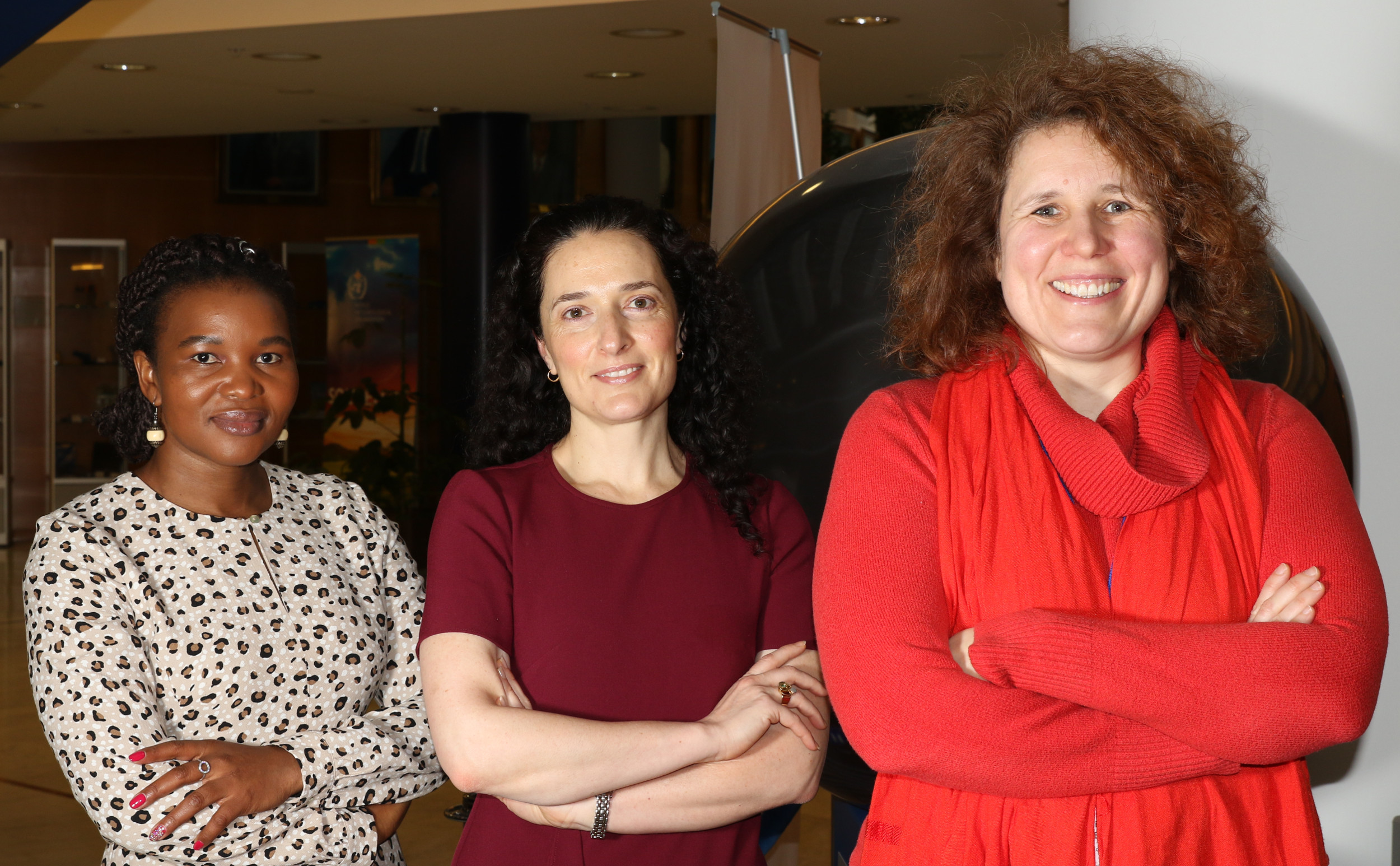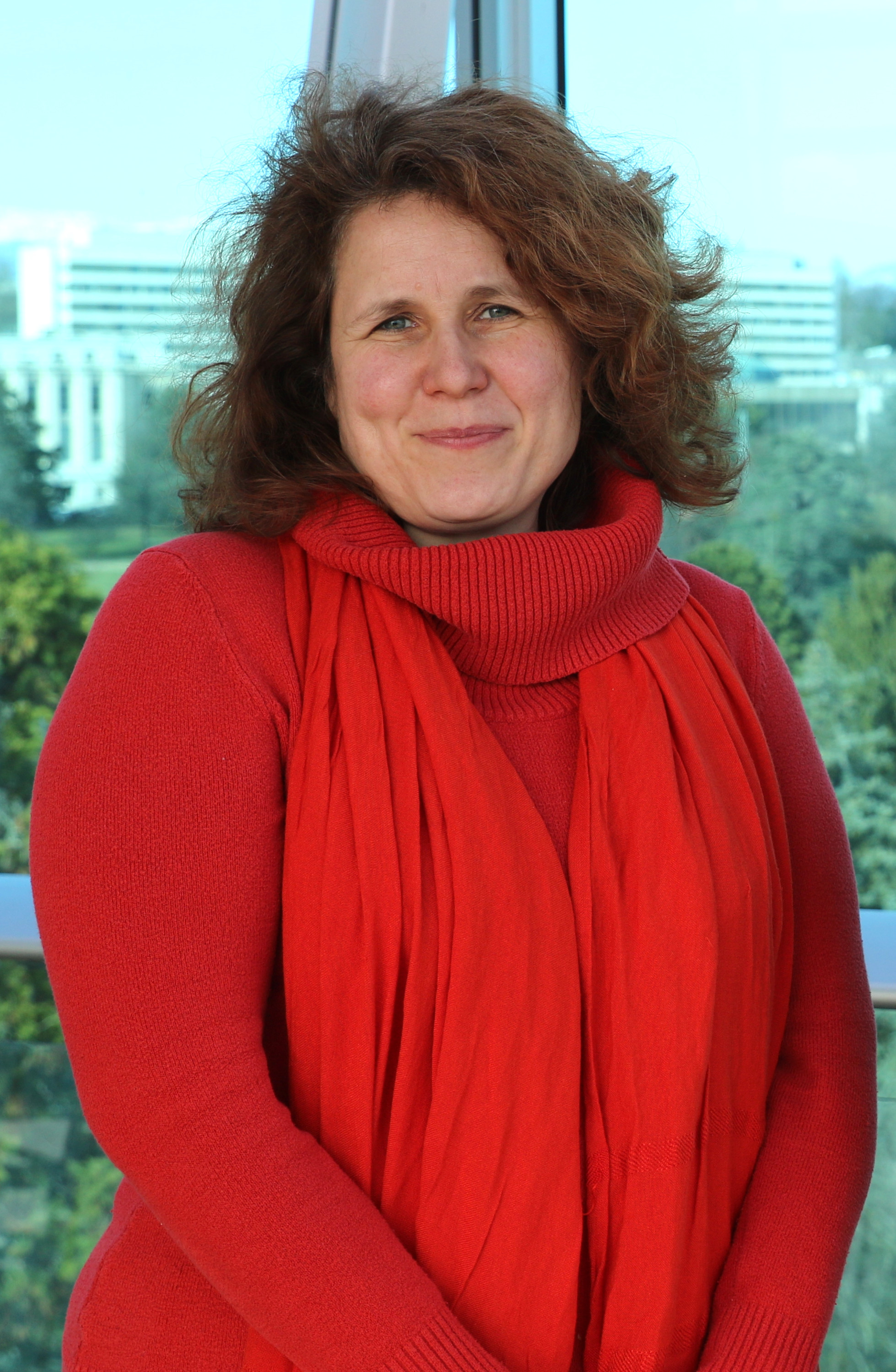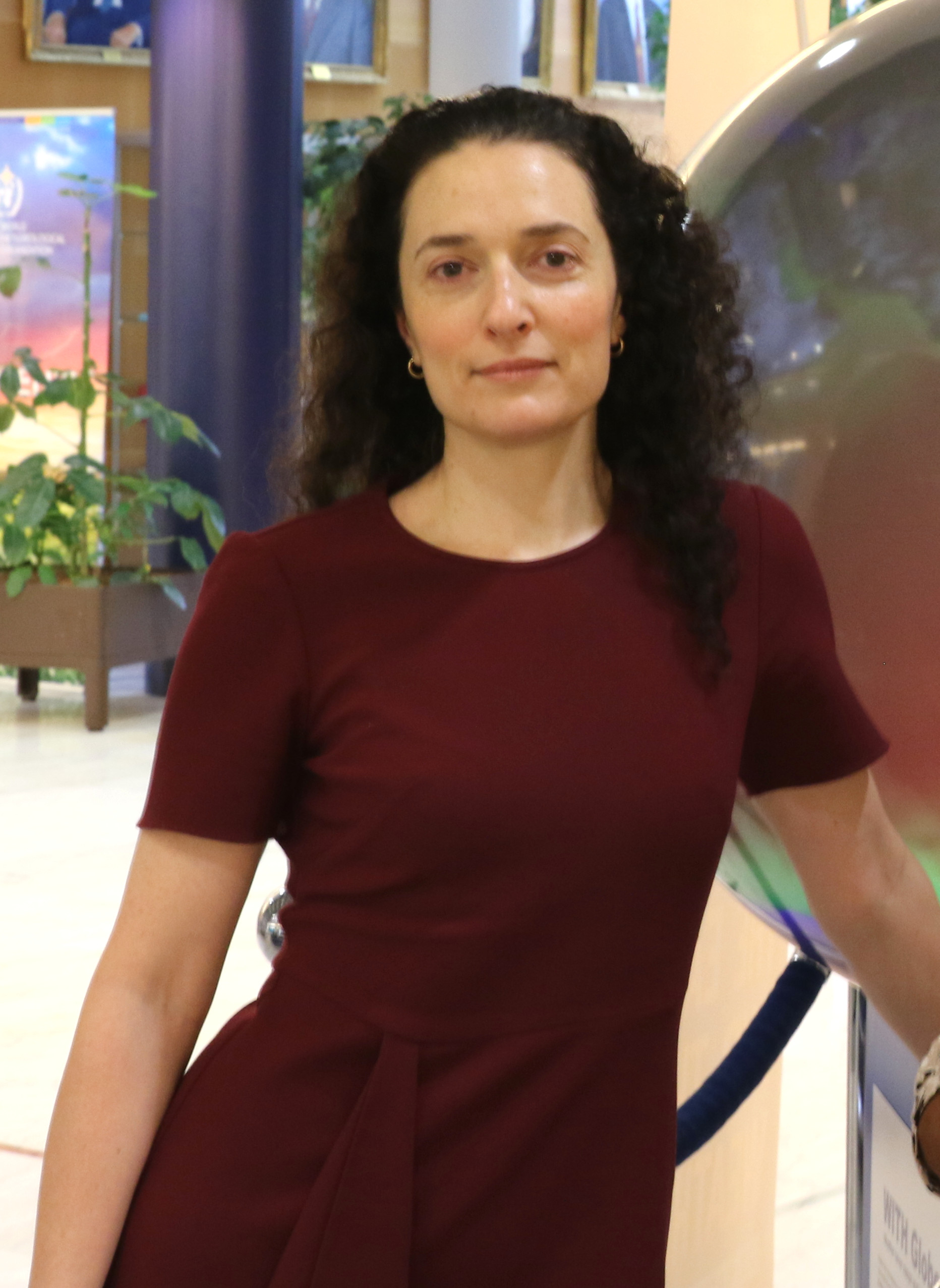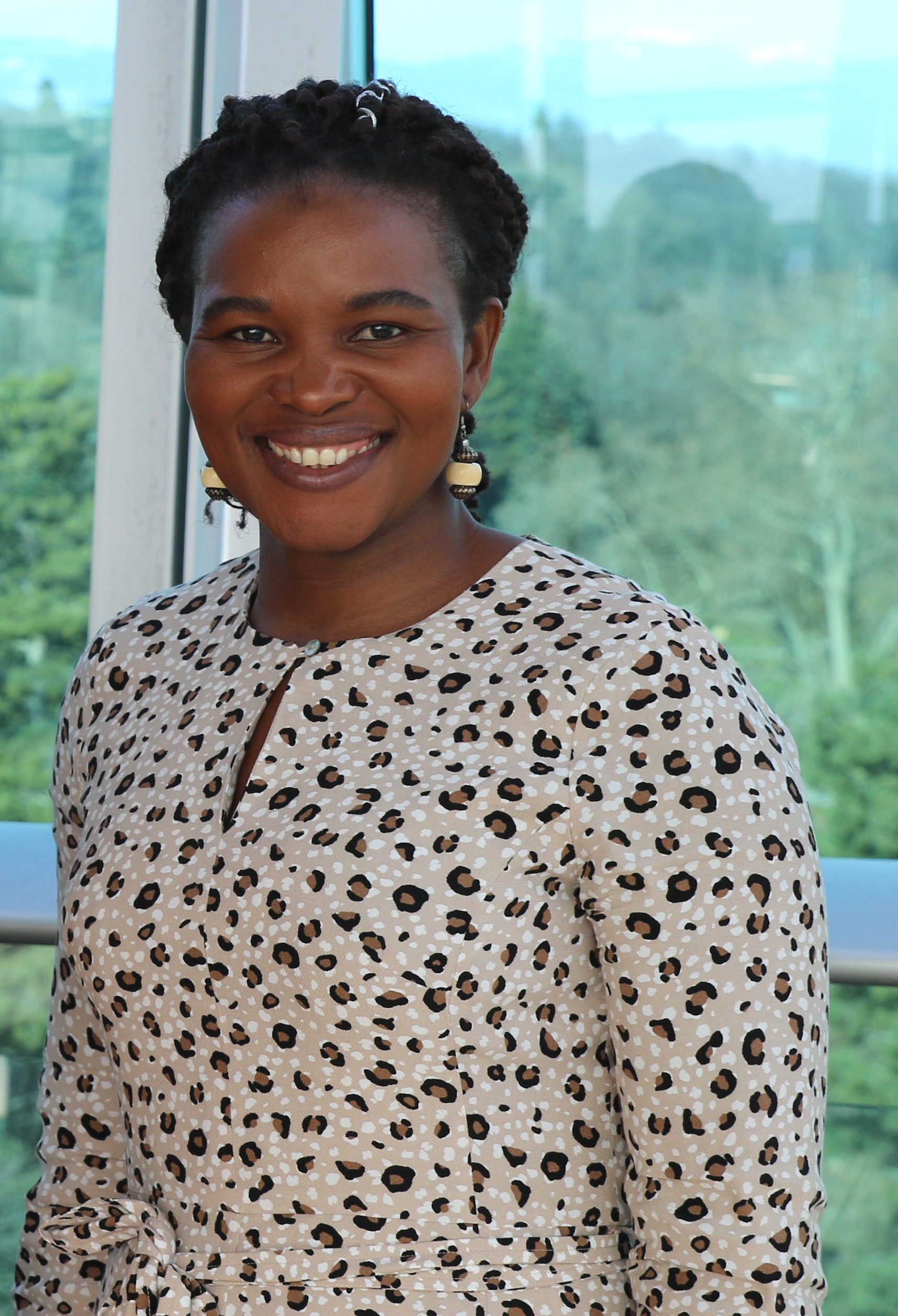Blog / February 11, 2020
Why we need women and girls to explore the science of Earth observations


It’s estimated that less than 30 per cent of researchers worldwide are women. With a small fraction of female students selecting Science, Technology, Engineering and Math (STEM) fields in higher education, female students’ enrolment is particularly low in the natural sciences, mathematics and statistics (5 per cent) and in engineering (8 per cent) says UNESCO.
The Group on Earth Observations (GEO) envisions a world that is informed by the science of Earth observations to tackle the world’s greatest issues related to climate change, disasters and sustainable development. To achieve this, diversity and inclusion efforts are aiming to bring more women, and more diverse voices and perspectives, into this exciting field.
To mark the International Day of Women and Girls in Science, we spoke to three women on GEO’s Programme Board who help coordinate the strategy and vision behind GEO’s Work Programme. We wanted to find out why they chose careers in Earth observations and why more women and girls should explore opportunities in STEM professions.


First, meet Nathalie Pettorelli. She’s an Applied Ecologist and Chief Editor of Remote Sensing in Ecology & Conservation, and in 2011 she co-founded Soapbox Science, a global initiative that is working to make women in science more visible to the general public. She is currently leading the work to develop and define a GEO Programme Board Equality, Diversity and Inclusion Subgroup.
Q: Can you explain some of the reasons why you chose a career in STEM?
Nathalie: I was the first in my family to go to university, so I really had no idea about how this all worked. During my second year of study at University, I chatted with a PhD student and this was the first time I learnt about being a researcher, what it meant, and how you get there. I absolutely loved the idea of being paid to explore, learn, travel and have no real boss – I was sold on being a researcher from then onwards. That year, I also discovered ecology – and got hooked on interdisciplinary approaches for exploring how ecosystems work and how species interact.
Q: In your opinion, what are some of the persistent barriers for women in science and how can they be overcome?
Nathalie: There are many. Women are still underrepresented in science and women in science are less visible, leading to a lack of role models. The profession is still perceived as being more suitable for men and geeks, and girls in schools are still not as encouraged as boys to consider a career in STEM. The potential of women in science is still under-appreciated, with many still not able to describe and perceive female scientists as brilliant, highly innovative, and genuine leaders in their field. Harassment of women in science is still an issue. There’s a lot still to be done, but things are slowly changing – the biggest progress being that we now talk about all this.
Q: What do you do to help bring more diverse voices into the field of science and tech?
Nathalie: Diversity is key to creativity and innovation. As an established scientist, I see it as my role to help build a more diverse STEM community. Soapbox Science is now a global initiative that has, I hope, been successful in making women in science more visible to the general public. In my home institution, I lead the Equality, Diversity and Inclusion (EDI) committee, which I hope provides a platform to challenge processes and tackle issues that hamper our ability to hear more diverse voices. Similarly, I sit on the Equality and Diversity committee of the British Ecological Society and am currently working on defining the terms of reference for a new Equality, Diversity and Inclusion Working Group at the Group on Earth Observations.
Q: What would be your message to girls who want to get involved in the field of Earth observations?
Nathalie: We are in a world where it’s extremely easy to find and connect with people in certain professions. There are a lot of wonderful female scientists in the field of Earth observations on social networks, who will answer any questions you may have and give you tips as to how to get there. Earth observations ultimately are a source of information that supports lots of scientific disciplines and relates to critically important societal issues – if you are not totally sure about what it is, and how it can be used, I’d say that you may well find that this is something you’d like to explore more!


Next, we spoke with Yana Gevorgyan, a Senior International Relations Specialist at the National Oceanic and Atmospheric Administration (NOAA). Yana is a Co-Chair on the GEO Programme Board representing the USA and as such, provides leadership in the work of the group of international technical and policy experts.
Q: Can you tell us why you chose a career in STEM?
Yana: didn’t choose a career in STEM; rather, it chose me. Throughout grade school, I really wasn’t a fan of hard sciences; I tolerated them. I earned my first higher ed degree in foreign languages in Armenia, my country of birth. During the formative years of my career, I worked at the American Red Cross in Armenia and fell in love with working with people and for the people, with multiculturalism and communications. So my second degree in International Politics from the American University in Washington, DC was supposed to take me on a journey to become a diplomat, or a chief of party for an international development mission. In my final year of grad school, I did a comparative study of an aspect of environmental policy in two different countries, through which I learned that despite what common sense suggests, public policy decisions are not always powered by best available science. This revelation put science in a different light. I no longer found it boring or intimidating; instead, I loved it for the power it held to inform and transform.
After grad school, a course of events that didn’t fit with any of the plans I had previously made for myself, brought me to NOAA – one of the premier science agencies in the United States government. Hello!!...Science and scientist galore! And in this new environment, I kept finding ways and places where I could make a contribution with my talents and my strong suits. I put my listening, thinking, writing, communications, analysis, leadership, relationship-building and other “soft” skills to work, ultimately earning me the privilege to become a valued member of this global family we know as the Earth observation community, with GEO being my nuclear family. And the best part - I view my work as having an element of diplomacy still. Discussions, negotiations, collaborations with my international partners to build common ground towards results that strengthen the international community - it is soft diplomacy that I love to practice.
Q: In your opinion, what are some of the persistent barriers for women in STEM and how can they be overcome?
Yana: I imagine I am holding a camera with an optical zoom. When I zoom in to get a narrow angle of view of my surroundings, I see successful women all around and at all levels - in positions of power and as rising leaders. Throughout my career, I have worked alongside the leadership of competent, highly regarded, impressive women. But then I begin to zoom out and take in the view of the surroundings from the wider angle of view, and suddenly it’s an entirely different picture - large conference halls are overwhelmingly full of men. That’s when I know the disparity is real.
I do believe that at the heart of it is bias; bias that has perpetuated for generations. Perhaps human beings are most comfortable around others of the same ilk, so men picked men for their peers, their subordinates, their leaders, etc.
Have you ever seen that cartoon depicting a male-dominant boardroom where the Chairperson says: “That’s an excellent suggestion, Miss Triggs. Perhaps one of the men here would like to make it?” To this day, I still find myself in Miss Triggs’ shoes. In most cases, I call it out. Usually, the other party will either get defensive or act surprised at their own expression of bias of which they had been unaware (or so they say). I don’t dwell on it. We move on. But I know that by calling it out, by drawing attention to the bias, we sharpen the awareness of men about their behavior. And most of them appear genuine in wanting to change. One conversation at a time, as uncomfortable as those conversations may be, change is taking place.
Q: How can we bring more diverse voices into the field of science and tech?
Yana: We ought to be exposing girls and young women to the very big “cool factor” of the science and tech occupations. With our youth being consumed by their social media feeds, we could be leveraging those platforms to disseminate images and stories of women explorers, conservationists, innovators, rocket scientists, data analysts. Tag them with #coolwoman and let young women and girls get those images in their feed to make them go “I want to do that!” or “I want to be like her!”
And for those who have already taken steps to enter this world, let’s show them the opportunities that await them; let’s be willing to coach and mentor; let’s be kind and gentle and accepting; let’s be willing to listen and give credit to them for good ideas. Let’s seek them out and recognize them for their efforts. What can be more motivating to an individual than be seen as making a difference.
Q: What would be your message to girls who want to get involved in the field of Earth observations?
Yana: It is fantastic to be a part of something great - and what can be greater than being a part of the community that empowers people around the world with knowledge to help sustain our beautiful home on planet Earth. The task of nurturing and caring for the Earth through innovation, research, applying knowledge, creative communications is a great fit for girls and women, and everyone, everywhere.


Lastly, we spoke to Andiswa Mlisa, from the South African National Space Agency (SANSA). She is currently the Managing Director of Earth Observation at SANSA and previously was the Department of Science and Technology’s Senior Science and Technology representative to GEO, responsible for the coordination of AfriGEO initiatives. She also serves as a Co-Chair on the GEO Programme Board.
Q: Can you tell us why you chose a career in STEM?
Andiswa: I grew up in a rural village of South Africa, where my exposure to careers was mainly limited to farmers, teachers and nurses. My family was no exception, my father was a teacher and my mother was a nurse – both believed mathematics was a key subject to do. So I did it, even though I did not feel I was any good at it.
Q: In your opinion, what are some of the persistent barriers for women in science and how can they be overcome?
Andiswa: I believe that two barriers that a self-imposed are i) the lack of self-confidence and the stories that women tell ourselves tend to reinforce that we not good enough, what we could achieve and consistently seeking approval; ii) not using or receiving feedback or support from other woman, and rather opting for “pull her down syndrome.” I think that self-awareness and understanding one’s life story and how that plays itself in the workplace builds self-confidence and builds strong and supportive relationships.
An external barrier is that men sometimes tend to be dismissive of female intellect, knowledge, experience and leadership and the issue of gender equality more generally. As positions of authority are still mostly occupied by men, there is a need to be intentional about addressing this imbalance and promoting women in the workplace.
Q: What are some practical actions that have been successful in bringing more diverse voices into the field of science and tech?
Andiswa: GEO has always been aware and advocated for geographical diversity, but never for gender diversity. I recall a couple of years ago, when the Strategic Plan was being developed, a few of us women raised this. The response from the male colleagues was dismissive and the issue was not given a second thought. In other organisations I have worked in, what has brought success, is a clearly articulated intent to achieve gender equality. An open and transparent conversation is held. Gender equity is driven by the leadership and implemented at all levels of the organisation.
Q: What would be your message to girls who want to get involved in the field of Earth observations?
Andiswa: Earth observation is tangible, real and yields timely results for supporting informed decision making to address the almost overwhelming socio-economic and environmental issues the world faces. It is a very fulfilling career. It has enabled me to engage with diverse and fascinating people, to travel and visit awesome places.
Thank you for your subscription to the GEO Week 2019 mailing list.